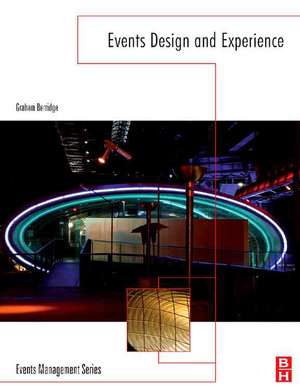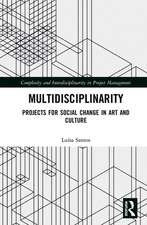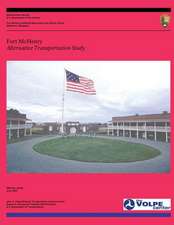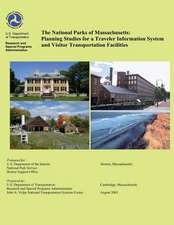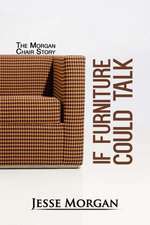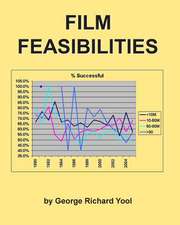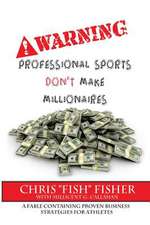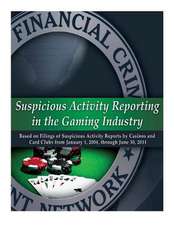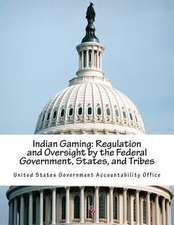Events Design and Experience: Events Management
Autor Graham Berridgeen Limba Engleză Paperback – 20 dec 2006
By drawing upon ongoing research conducted over several years into the experiences of groups and individuals who attend events this text will ask questions such as: What was the rationale behind a particular event being designed in a certain way? What was the actual experience of consumers? How was the event materially delivered and did the experience created provide a satisfactory outcome? How can experiences be understood (via semiotics) especially the physical elements of an event?
Structured in four sections, Events Design and Experience discusses:
* What are events? An overall view of the industry, its definitions and market demand. It also covers an analysis of previous literature, and draws upon real life events such as Wembley plc, Leapfrog Corporate events and the British Cycling federation
* What is an event experience? An explanation of the nature and stages of experience, and the emergence of the experience industry itself. Cases such as the Proms, London Fashion week ands the Nike Fun run are used to illustrate.
* Designing Experiences. Considers how design itself can impact upon the experience, in some cases fundamentally changing the nature of experience. It asks the question of how experiences are designed and what do they signify to the customer once complete.
* Analysing Event Experiences. Considers how experiences can be analysed and evaluated looking at the artificiality of the event and how this reflects in the experience of consumers. Also includes a review of the psychological processes of perception and interpretation and how meaning and experience can be analysed, and how we may begin to unravel the meanings attributed to certain events.
With international case studies throughout, Events Design and Experience has a coherent user-friendly structure including chapter summaries, review exercises and topics for discussion to consolidate understanding.
| Toate formatele și edițiile | Preț | Express |
|---|---|---|
| Paperback (1) | 392.89 lei 3-5 săpt. | +29.59 lei 6-12 zile |
| Taylor & Francis – 20 dec 2006 | 392.89 lei 3-5 săpt. | +29.59 lei 6-12 zile |
| Hardback (1) | 1338.83 lei 6-8 săpt. | |
| Taylor & Francis – 4 sep 2015 | 1338.83 lei 6-8 săpt. |
Preț: 392.89 lei
Preț vechi: 427.06 lei
-8% Nou
75.18€ • 78.65$ • 62.45£
Carte disponibilă
Livrare economică 13-27 martie
Livrare express 26 februarie-04 martie pentru 39.58 lei
Specificații
ISBN-10: 0750664533
Pagini: 318
Ilustrații: 1, black & white illustrations
Dimensiuni: 189 x 246 x 17 mm
Greutate: 0.7 kg
Ediția:1
Editura: Taylor & Francis
Colecția Routledge
Seria Events Management
Locul publicării:Oxford, United Kingdom
Public țintă
Levels 3 and above of Events Management degree courses and related options (from 2004 there will be over 70 degree courses in Events in the UK alone. A rapidly growing area). Also Masters students on conversion courses and professionals already in the industry.Cuprins
Section 1: What are Events:
1. Setting the context for event experiences
2. Overview of organisational processes
This introductory section aims to establish the context within which event experiences take place. It is also the scene setting chapter, discussing(briefly) the event industry, terminology and definitions, market demand. Nearly all existing event based texts tend to provide an internal view of the process of organisation and management which confers upon the reader solid practical approaches. This chapter will also critically review that literature on event management in order to establish a context and platform from which a more meaningful understanding and analysis of the experience of consumers can be drawn. It will consider how event manuals approach the organisation and management of events with reference to the impact and experience of those events. For example the work on event organisation and marketing of Watt, Hoyle,Goldblatt, Sonder and Getz , the programming concepts identified in O’Toole, Allen, Shone, Torkildsen and Rossman will be explored. Practical material will be drawn from, amongst others, the event management section of Wembley Plc, London Borough of Ealing, Leapfrog Corporate Events, Catalyst Event Management, Union Cycliste International , British Cycling Federation.
Section 2 : What is an event experience?
3. What are event experiences?
4. The dimensions of event experiences
5. Interaction between experience and participant
6. The flow of experiences
7. Providing for experiences
This section will introduce and explain what event experiences are and provide a setting for the following sections. It will follow on from Chapter 1 by both explaining the nature and stages of experience and the emergence of the experience industry itself (including the marketing of experiences). It will seek to clarify the nature of an experience and how experiences are more than simply one-dimensional and uniform throughout the time an individual or group is in attendance utilising , for example, the work of Kelly & Godbey, Leitner, Gray, Hull and Csikszentmihalyi, O’Sullivan and Spangler. To illustrate how these points relate to the experience examples will be drawn from many areas such as Academic Conferences, Business Conventions, Graduation and Award Ceremonies, Olympic and Commonwealth Games, RAF Museum Exhibitions, Sport in Science Exhibition, DMS&S Show, London Fashion Week, Clothes Show Live, Proms, Ice-Skating, Nike Fun Run
Section 3 - Designing Experiences
8. Understanding Design
9. The Design process
10. Creating themed environment
11. Event artistry
This section provides an overview of design considerations. The chapter considers how design itself can impact upon the experience, in some cases fundamentally changing the nature of experience. It asks the question of how experiences are designed and equally importantly what do they signify, once complete, to the consumer. The chapter will seek to raise an awareness of how the design and creation of environments influences the experience in other words to establish the need and role of what might be called 'event artistry'. It will further explore the link with experience marketing.
A design management perspective will be embraced that will elaborate on the design of experiences associated with experience infusers, enhancers and makers. Consideration here will be given to parameters of experiences. This will be linked with effective event design focusing on artistic concepts such as installation (site-specific, sensual, kinetic), conceptualisation (abstract, interpretative) assemblage (raw, unorthodox), pop art (larger-than-life) impressionism (suggestive, fluid) kitsch ( tongue-in-cheek) regionalism (urban, representative) realism (natural, true) surrealism (make-believe) traditionalism ( classic) narrative art ( literary, eternal).
Practical material illustrating the above points will drawn from many sources but will include, for example, Academy Awards Board, Chef Master Class, Ideal Home Exhibition, London Transport Museum, MTV Awards, Halloween Party, Graduation Ceremony, Mitzvah Celebration, Music 100, London Fashion Week, Cincinnati Museum Centre, Science Museum, World Mountain Bike Series, MOMI, Metallica on Tour, the Bike Show.
Section 4 -Analysing event experiences
12. Analysing of event experiences
13. Experience Perception and interpretation
14. Event contextualisation and representation
The final section will offer a concluding analysis of the experience, considering how experiences can be analysed and evaluated and to consider the artificiality of the event and how this reflects in the experience of consumers. This will lead onto a review of the psychological processes of perception and interpretation and how meaning and experience can be analysed and how we may begin to unravel the meanings attributed to certain events. Finally the mode of attendance will be considered as participants construct their own experiences, not necessarily through the sole nature of the provision, but through the shared characteristics and behaviour patterns that groups and individuals bring with them to create and interpret experiences. The work of Tomlinson, Veal, Featherstone, Wearing, and Hall amongst others will be used to highlight these points.
Examples will be drawn from participant research and assessment through site visits. Previous examples will be revisited to illustrate some analytical points as well as reflecting on the following events: Adrenalin 98, Beatles Walking Tour, London Cross Championships, Virgin Assault 3, Nike Fun Run, TiLE, CONFEX, The Event Show, Savoy Awards, Glastonbury.
Summary & Conclusions
Descriere
For the first time Events Design and Experience draws together the relationship between event design and the experience of consumers and participants. It explores and analyses the event experience of the individual and how this can be ‘controlled’ by design.
By drawing upon ongoing research conducted over several years into the experiences of groups and individuals who attend events this text will ask questions such as: What was the rationale behind a particular event being designed in a certain way? What was the actual experience of consumers? How was the event materially delivered and did the experience created provide a satisfactory outcome? How can experiences be understood (via semiotics) especially the physical elements of an event?
Structured in four sections, Events Design and Experience discusses:
* What are events? An overall view of the industry, its definitions and market demand. It also covers an analysis of previous literature, and draws upon real life events such as Wembley plc, Leapfrog Corporate events and the British Cycling federation
* What is an event experience? An explanation of the nature and stages of experience, and the emergence of the experience industry itself. Cases such as the Proms, London Fashion week ands the Nike Fun run are used to illustrate.
* Designing Experiences. Considers how design itself can impact upon the experience, in some cases fundamentally changing the nature of experience. It asks the question of how experiences are designed and what do they signify to the customer once complete.
* Analysing Event Experiences. Considers how experiences can be analysed and evaluated looking at the artificiality of the event and how this reflects in the experience of consumers. Also includes a review of the psychological processes of perception and interpretation and how meaning and experience can be analysed, and how we may begin to unravel the meanings attributed to certain events.
With international case studies throughout, Events Design and Experience has a coherent user-friendly structure including chapter summaries, review exercises and topics for discussion to consolidate understanding.
